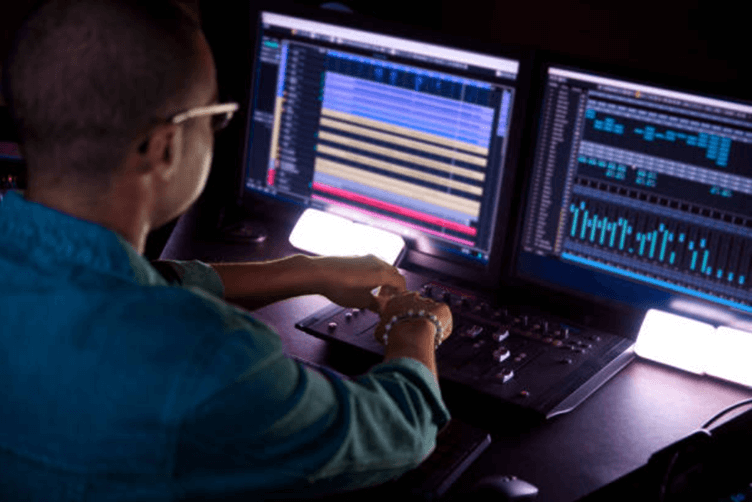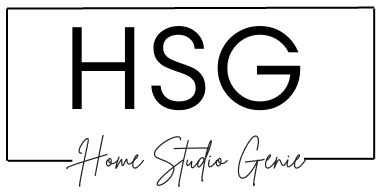Have you ever wondered why your finished mixes sound significantly quieter compared to other tracks? Does it leave you feeling like something went wrong during the recording or that you misjudged the volume levels?
Don’t worry, because what you’re experiencing is actually quite normal, and you haven’t necessarily made any mistakes.
The reason your mixes appear quiet is not that they lack better mixing and mastering, as you may have read online.
In this article, we will explore the actual cause behind the low volume in your tracks and provide you with effective solutions to make them louder.
Hopefully, you can finally answer the question: Why Are My Mixes So Quiet?
Let’s dive in.
The Quick Answer: Bridging the Volume Gap
I’ve been making music for a while now, and I’d always wonder why my mixes sounded so quiet compared to the stuff I hear on the radio or streaming services.
I know I’m not the only one who feels this way because I’ve seen a lot of people asking the same question online.
Well, I finally figured it out!
The reason my mixes are so quiet is because of something called dynamic range. Dynamic range is the difference between the loudest and quietest parts of a song.
If the dynamic range is too wide, it can make the song sound quiet overall.
Here’s an analogy to help you understand dynamic range.
Imagine you’re in a room with a really loud fan on. It’s so loud that you can barely hear anything else. Now imagine someone starts talking to you. You can barely hear them over the sound of the fan.
That’s what it’s like when a song has a wide dynamic range. The loud parts are so loud that they drown out the quiet parts.
So, how do you fix this?
The answer is to compress the dynamic range of your song. Compression is a process that makes the loud parts of a song quieter and the quiet parts of a song louder.
Please note that all the tools mentioned in this guide will be available in your preferred music production software. Some DAWs have in-built VST plugins that will help you carve the sound you want.

This helps to balance out the overall volume of the song and make it sound louder without clipping.
There are a lot of different ways to compress a song. You can use a compressor plugin, or you can hire a mastering engineer to do it for you.
If you’re just starting out, I recommend using a compressor plugin. There are a lot of great plugins available that are easy to use.
Best Compressor VSTs:
- PSP VintageWarmer2
- UAD 1176 Classic Limiter Collection
- Fabfilter Pro C2
- Waves – SSL G Master Buss Compressor
- UAD Fairchild 660/670
- iZotope Neutron 4 Compressor
- Xfer OTT

Once you’ve compressed your song, you should notice that it sounds a lot louder. But don’t overdo it! Too much compression can make your song sound muddy and lifeless.
To fully comprehend this concept, let’s familiarize ourselves with a few fundamental concepts.
See Also: Is Ableton Live Used In Professional Studios in 2023?
Tips for Making Your Mixes Louder:
- Use a limiter. A limiter is a type of compressor that prevents your peaks from clipping. This can help to make your mixes sound louder without sacrificing quality.
- Use EQ. EQ can help to balance out the frequencies in your mix, which can make it sound fuller and more powerful.
- Use panning. Panning can help to create a sense of space in your mix, which can make it sound more interesting and engaging.
- Use automation. Automation can be used to control the volume, panning, and other parameters of your mix over time. This can help to create a more dynamic and interesting sound.
Before delving into the practical part of this guide, we recommend a good pair of music production headphones. These will help you clearly hear and analyze the changes you make to your sounds.
Measure Your Sound Levels: dB SPL vs. dBFS

Sound Waves (dB SPL)
When a sound wave travels through the air, it physically displaces air molecules, pushing and pulling them as it moves.
We measure the intensity of this pushing and pulling as sound pressure level, expressed in decibels (dB).
For example, normal speaking volume is approximately 60 dB of sound pressure level (dB SPL). The volume control on your sound system adjusts the amount of sound pressure the speakers generate.
For our discussion, let’s assume that these sound pressure levels have no maximum limit.
Digital Signals (dBFS)
Recording sound waves into a computer presents a different scenario. A computer, or any digital device, represents sound pressure as a numerical value within a finite set of numbers.
We refer to this range of numbers as the Full Scale, encompassing the maximum possible values.
Consequently, there exists a maximum value allowed, known as 0 dB Full Scale (0 dBFS), which no sound can surpass in volume.
The level of a recorded sound is then measured by how far below zero it registers.
If we record a sound at -20 dBFS, we can play it back through our speakers at any sound pressure level (dB SPL) within the capability of the speakers to reproduce.
Peak vs. RMS Levels
Sound can be measured at a single moment or averaged over a duration of time. The latter method proves more useful for describing the overall loudness of a song.
The level measured at a particular instant is known as the peak level. The average level measured over a specific timeframe is the RMS (root-mean-square) level.
Dynamic Range
Dynamic range refers to the difference between the quietest and loudest sounds in a recording.
If the quietest part of a recording measures -20 dBFS, and the loudest part registers -10 dBFS, then the recording’s dynamic range is 10 dBFS.
Loudness
So far, we have established that sound can be measured in terms of dB SPL (sound pressure level) or dBFS (values below the maximum allowed in a computer).
For each of these, we can measure either the peak level or the RMS (average) level.
We have also defined dynamic range as the difference between the quietest and loudest parts of a recording.
Now, let’s delve into the concept of loudness.
Loudness represents the subjective perception of sound pressure levels.
The crucial factor here is the subjective perception.
The loudness of your recording is not determined by the amount of sound pressure or the distance below 0 dBFS. Instead, it simply refers to how loud we perceive a sound to be.
This raises the question:
What factors contribute to our perception of loudness?
Since humans perceive sound over time, peak values are not reliable indicators of how loud a recording will sound.
Sound pressure level (dB SPL) is not useful for describing loudness in this context either, as it can be adjusted with the volume control of the speaker system.
This leaves us with RMS values for dBFS, but even this measurement alone is insufficient for describing the loudness of a song.
See Also: Are Ableton Live Stock Plugins Good Enough? (Checked)
Measuring Loudness: Why Are My Mixes So Quiet
Fortunately, there are software tools available that enable us to measure sound in Loudness Units Full Scale (LUFS). This measurement better reflects the human perception of loudness.
If you have access to a plug-in or digital audio workstation (DAW) that provides LUFS measurement capabilities, utilize it.
If not, you can rely on a combination of RMS-level readings for dBFS and compare your track to a reference track using your ears.
The Problem: Why Are Your Tracks Quiet?
Now, let’s address the core issue of why your tracks sound quiet. This problem arises when your peak levels approach 0 dBFS, while your RMS levels remain relatively low.
Since the peak levels have already reached the maximum, you cannot increase the volume further without clipping.
However, the average levels are still too low.
The Solution: Enhancing Volume
To resolve this issue, we must reduce the peak levels—the loudest parts of the song—so that we can raise the volume of everything else.
What we’re doing is we are reducing the track’s dynamic range. Numerous techniques can accomplish this, with compressors and limiters.

Mastering engineers employ various techniques such as compression, limiting, saturation, clipping, and EQ specifically to make songs louder.
This is why people often mention that a track needs mastering. However, it is more accurate to say that the track has too wide a dynamic range.
It’s important to note that reducing dynamic range doesn’t imply that a less dynamic range is always better.
There is a balance to strike. If you completely eliminate all peaks, your song will lose impact and sound lifeless. On the other hand, if your peaks are too high, your song will appear excessively quiet.
A Quick Fix: Making Your Track Louder
Method to increase the volume of your track:
- Add a limiter plug-in at the end of the signal chain on your master track.
- Set the output ceiling to -1 dBFS (to avoid any inter-sample peaks reaching zero).
- Lower the threshold until your LUFS readings range between -10 LUFS and -16 LUFS, depending on your intended distribution channels.
- If you don’t have access to a LUFS meter, you can use a combination of RMS-level readings for dBFS and compare your track to a reference track using your ears.
If you don’t have access to a LUFS meter, you can use a combination of RMS-level readings for dBFS. You can then compare your track to a reference track using your ears.
See Also: Can You Run Ableton Live On A Macbook Air in 2023? (Explained)
To Wrap It Up
The reason your recording sounds quiet is due to the peak levels nearing zero while the RMS values remain relatively low, resulting in a wide dynamic range.
To increase the overall volume, you need to decrease the peak levels while preserving a balanced dynamic range.
It’s crucial not to overdo this process. This is because an excessive reduction of dynamic range can drain the energy from your music.
I hope this article has provided clarity on the subject of loudness and volume.
Sources:
How To Master a Song: 14 Easy Steps
What is Mastering? Why Master Your Tracks Before Release

Todd is a passionate music enthusiast with a deep love for the guitar and extensive experience. He is a recording artist, live performer, and songwriter. Todd’s enthusiasm extends to the latest audio technologies and gear, making him an avid music listener. He takes pride in his vinyl record collection and shares his knowledge on guitar, audio gear, and technical subjects at Home Studio Genie.

